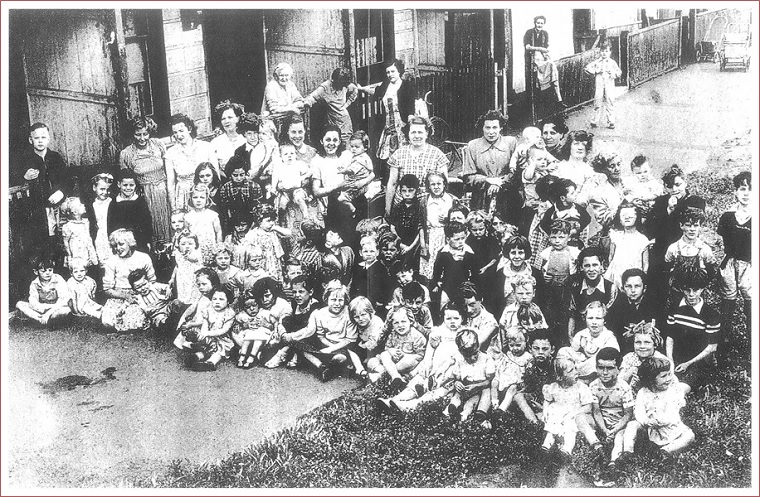Montague today, comprising mainly small industrial complexes, is much changed from earlier times. From the 1870s through to the 1950s, it had a large residential population and was one of the poorest communities in Melbourne. Children living in Montague were disadvantaged by poverty, inadequate housing, and poor sanitation and drainage.
Children from poor families often found work in factories, where they earned a pittance and where work-place accidents were common. The Factories Act (Vic.) of 1885 decreed that the minimum age for employment was 13 years for boys and 12 years for girls. Children of destitute mothers were often taken away from them in the nineteenth century, to be boarded out or placed in an orphanage. For some new mothers, unmarried, homeless and with no means of support, the situation could be so desperate that infanticide (and a resultant period of imprisonment if the mother was convicted) seemed the only recourse.

Children residing in part of Buckhurst Street, Montague, posing for the Argus, 3 December 1954 (source: PMHPS)
The working-class people of South Melbourne have been described as showing ‘remarkable adaptability’ in the wake of 1890s depression. Indeed, in the face of adversity, the children of Montague were resourceful and resilient. The inventiveness of their play and their strong camaraderie stood out. With limited space in their small homes and without backyards, the streets and public places were their playing spaces. With few playthings and means of entertainment, they scavenged and they stole. Playing in the flood waters was a particularly popular activity for local children. Young boys in the neighbourhood got up to all sorts of daring antics. In 1875, for example, a group of Montague lads were caught by police playing the illegal game of ‘pitch and toss’ (a forerunner of two-up). There are numerous reports of petty thieving and of boys being general nuisances. As boys got older they joined the ‘Montague push’; it was a relatively easy transition from street urchin to larrikin.
Some poor families that lived in sub-standard housing were moved out of Montague and into better quality housing from the late 1930s. In the early 1950s, however, Montague remained a crowded neighbourhood that boasted possibly the largest concentration of children in Melbourne. As part of its annual Christmas Street Competition the Argus newspaper scouted about Melbourne in search of the highest number of children living within 100 yards of any one street. In 1954 the Argus found two contenders in Thistlethwaite Street and Buckhurst Street. One of the mothers in Thistlethwaite Street commented that if four families that had 15 children between them had not just departed the neighbourhood for new accommodation provided by the Housing Commission they would have surely won the competition.
Page last updated: 08/11/19